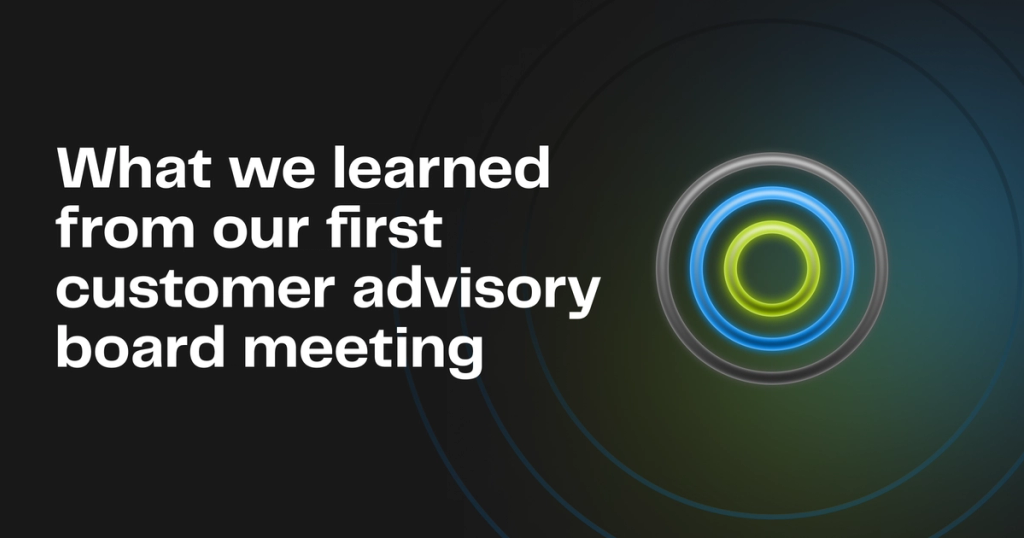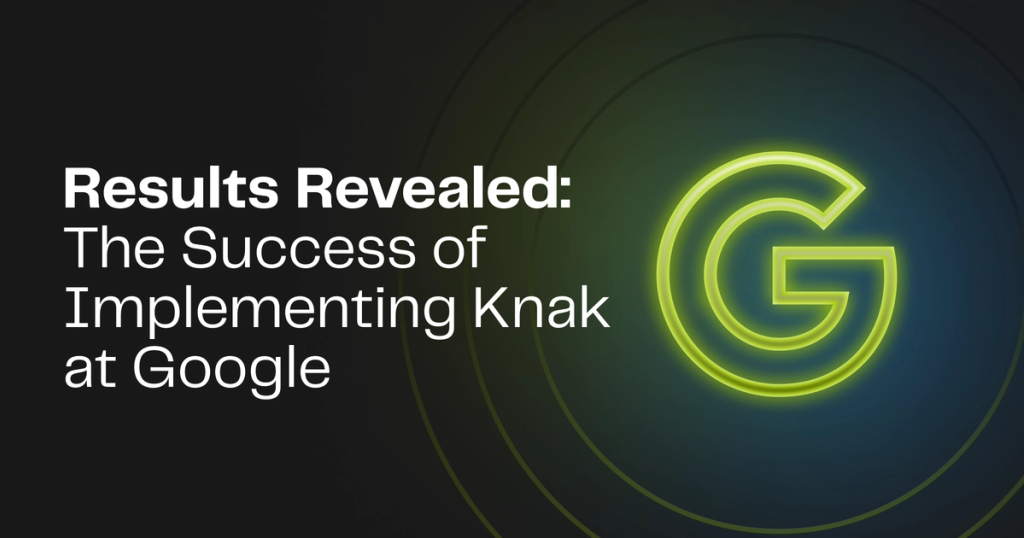Blog
Why You’re Not Getting Anything Done: A Guide to Fixing The Campaign Creation Process

Summary - When it comes to campaign creation, there are four major reasons you feel like you're not getting anything done. Here's how to fix it.
In a perfect world, campaigns are planned, created, approved, and sent without much faffery. Theoretically, those are the steps that equal success (at least from a process point of view).
But rarely, if ever, does it go that smoothly. That’s because you’re up against a lot of different competing and sometimes chaotic variables. You have a team of different stakeholders and a team of contributors to manage. You have a number of different tools that are being used across those individuals. You have a backlog of requests that are all “top priority”. And you have to communicate the results of those efforts in a way that’s useful to executives, stakeholders, and contributors.
It’s a lot. So while your goal is to get campaigns out there door quickly and efficiently, you’re often finding yourself stuck in the proverbial weeds.
In this article, we’re going to highlight some of the most common bottlenecks in the campaign creation process, and show you the strategies and tactics you can use to unblock your campaigns, your team, and most importantly, yourself.
(There’s a TL;DR at the bottom of this post if you’re a bit tight on time. But you’ll miss out on a lot of helpful context and some insightful links if you go straight there.)
Problem 1: Stakeholder Alignment
Without stakeholder alignment, your campaigns will almost always derail — often at multiple stages of the creation process. For example, a brief is submitted to the creative team, but it’s vague or missing key information. As a result, the copy isn’t on point. But that wasn’t caught until the testing phase. Another stakeholder steps in with design changes. Meanwhile, it’s taken you the better part of an afternoon to build that email, and now you have to start all over again. But, you have to wait for stakeholders to chime in on the changes and updates. And suddenly the campaign isn’t “top priority” anymore. The process drags out from an afternoon to a full week. And because it’s not the only campaign you’re trying to get out the door, it’s near impossible to keep track of the details and updates as they trickle in. Are you getting anxious just reading this? I know I am writing it.
The Solution
Establish alignment at the outset of any campaign, and have a system in place to ensure milestones are met on schedule. At Knak, we use the DACI framework (Drivers, Approvers, Consulted, Informed) to provide all parties with a crystal clear picture of what their responsibilities are, and at what stage.
However, even the most elaborate decision-making or accountability framework in the world falls apart if you don’t have a clear and enforced timeline of project milestones.
What does this look like in the real world?
Strategy: Every campaign has a strategy that should be agreed upon by every stakeholder. That strategy should also include a creative brief with all the necessary information including audience, objective, core message, tone, and any necessary design considerations. This vital step needs to be completed and approved before any creative work begins.
Approvals: Require approval for every stage of work. Strategy. Copy. Design. Just as these elements have deadlines, approvals for them should also have deadlines. While this will take a bit more time for both planning and executing, it means everyone is on the same page and there are zero surprises on send day. The train may be moving a bit slower, but it stays on the rails and you stay out of the weeds.
To make this work, create a Gantt chart with those approvals baked in at every stage. Not only does this make it easier to create a reasonable timeline, but it can also show stakeholders and contributors exactly where the bottlenecks are happening — and that creates accountability.

Strategy, approval. Copy, approval. Design, approval. Done.
Problem 2: Tools Hinder Workflow
Over time, we discover challenges or problems and procure tools to address them. Eventually, you end up with a frankenstack of different tools and platforms that become problematic. Some teams are using different tools for the same purpose (project management platforms, for example). Other tools have been adopted to solve single challenges, when a better solution exists that could solve multiple challenges. Often, this technology doesn’t play nice together, so it creates tiresome manual processes that make everything take forever to complete. While your martech stack should map out in a linear top-down fashion, it actually looks a lot more like the Tokyo subway system. So, even when all your stakeholders are aligned and approvals are established, the technology creates a huge amount of back and forth that makes it nearly impossible to get campaigns out the door on time.
The Solution
Audit your campaign creation stack. Take stock of every tool that every team is using, and for what function(s). Identify where there’s overlap between tools, and look for opportunities to consolidate them into a single tool.
For example, your creative team might be using Asana while your growth team is using Wrike. So, not only are you paying for two different tools that serve the same function, there is zero visibility between the platforms. And when these teams’ objectives are so closely intertwined, there is a huge opportunity for things to be missed or lost in translation. At best, someone is manually transferring important information from one platform to the other and wasting a lot of time doing it. At worst, they aren’t and the work happens in silos, without collaboration. So your tech stack problem starts to impact your alignment problem and actually compounds both issues.
As another example that’s specific to campaign creation (our specialty): You may be using three or four different tools to create, test, collaborate on, and execute your campaigns. This, again, creates many additional steps. Each step creates extra work, and opens up the opportunity for error — not to mention additional costs. It’s marketing on hard mode. With a dedicated campaign creation platform, you can cut your tech stack in half, reduce costs, and make the creation process much easier.
Thoroughly auditing your campaign creation stack (and even your entire tech stack as a whole), can reveal huge inefficiencies in the way you work — as well as opportunities to change that for the better.
Pro tip: You can further improve your workflow by syncing project elements with a tool like Unito.

Does this remind you of your martech stack? It may be time to get things in order.
Problem 3: Demonstrating Results
Marketers LOVE data. We love seeing the impact of our campaigns and learning what works, what doesn’t, and why. It tests our own assumptions and intuition, and perhaps more importantly, it helps us better understand our customers.
So why is it so rare that these results are communicated to the right people? We have the data. This should be easy, right?
Yes, and no. First, it takes time to extract that data and synthesize it into something consumable. Time that you probably don’t have a lot of. The data needs to be communicated, which is a challenge in itself because different metrics matter to different teams. Then, it needs to be accessible to all relevant people. And if you’re already spending half your time herding stakeholders and contributors alongside doing manually what could be automated, accomplishing any of this is a luxury.
The Solution
Demonstrating results really comes down to first principles: Knowing who needs what data, why they need it, and how to best communicate it. So let’s break that down.
What to communicate
Different audiences within your org are going to care about different metrics. For example, your C-suite most likely cares most about pipeline and revenue. As such, ensure that information is up front and center. But your marketing team is likely concerned with opens, engagements, and conversions—data that is actionable and informs future campaigns.
Larger teams with access to data analysts or campaign performance software may be able to determine finer metrics like actions taken by certain cohorts, length of time on page, key steps a prospect took before a conversion, or what the path to conversion looked like — to name a few.
While this kind of data is extremely powerful in that it allows you to get some incredible insights into customer behavior, it also risks firehosing stakeholders with too much information, where you run the risk of them not understanding the results, focusing on the wrong thing, or making assumptions that aren’t necessarily correct.
In these cases, it’s important to explain what the data means. Be sure to extract the key insights from those numbers. Include a high level summary for those who don’t have time/don’t know how to look at the actual numbers.
(Jessica Fao, Senior Director of Marketing Operations and Analytics at Cloudfare — previously F5 — hosted a webinar on how to turn raw data into actionable insights that’s very much worth a watch.)
How to communicate it
Here, simplicity and accessibility are key.
Create a templated deck that you can use to display those numbers, insights, and any other pertinent performance data. Once campaign results are final, create a copy of the template, label it, and store it in a shared drive that can be accessed by anyone who might need it.
Keep in mind that these decks can be extremely useful in briefing future campaigns.
While you may be using an analytics platform that analyzes your performance data and synthesizes it into insights, we still recommend keeping this in internal decks — even if it’s just in the format of screenshots. This ensures that you always have ownership of those insights, and they can always be accessed by anyone.
From there, it’s as simple as getting on Slack or Teams, summarizing the results, and providing a link so anyone involved can dig in further.
For high stakes projects, host a post-mortem. While these are typically a holistic approach to examining the entire campaign, they’re a great opportunity to walk the team through the numbers in a way that makes sense to everyone. After all, everything that went right or wrong is almost always reflected in the results.
Problem 4: Request Backlog
There’s a reason why marketing operations folks are in such high demand: there are always more campaigns to go out than there are people to facilitate the process. It’s a problem as old as email marketing itself.
MOPs pros are often responsible for both the building and the execution of campaigns. So, in addition to planning, chasing stakeholders, and trying to meet deadlines, they’re also the ones moving code around to try to get every email or landing page just right. Add in a dash of last-minute “let’s do this instead of that” feedback, and it’s easy to see why the requests start to pile up.
While a backlog may never go away completely, there are ways to establish a process that empowers the team while reducing the backlog to manageable levels.
The Solution
In terms of campaign creation, moving to a self-serve model can be hugely beneficial in clearing out that backlog. Platforms like Knak (that’s us) take the technical (and one of the most time-consuming) aspects out of creating campaigns — the actual building of them. So, instead of you or someone on your team spending hours editing html inside of your MAP, you’re working in a really simple and elegant no-code builder.
This is extremely useful for remote or decentralized teams. It actually empowers them to create their own campaigns (with strict brand guidelines, of course), so you don’t actually have to. This also eliminates potential rounds of feedback and approvals because it’s the stakeholder making those changes — they’re implementing their own feedback. You simply use your MAP to send the campaign afterward.
Other Tips for Staying Out of the Weeds
While the above covers scenarios that are specific to campaign creation, we want to quickly touch on a few really important things that can be applied more broadly (but will also help keep you out of the weeds in campaign creation).
Set boundaries
We work in an industry where everything feels urgent all the time. Is it important? Sure. Is anyone going to die if it gets done next week instead of today by 5 p.m.? Almost certainly not.
If you’re responding to every request as if the company is going to fail if you don’t jump on that grenade right away, you’re not going to be able to get to the things that really do matter long term. It’s also unfair to team members who have done the appropriate planning for their own projects, only to have them deprioritized. So it’s important to learn how to say no. Or at least, “Not today”.
Make time for deep work
Deep work is usually where we do our best work. It’s where we come up with solutions to our toughest problems. So it’s absolutely necessary that we dedicate time to it. Some folks can block off time in their calendar and adhere to that. Others need to be in a certain headspace to do deep work, so it’s all a bit more spontaneous. Either way, when it’s time to tap into that level of focus, make it your number one priority. It’s where your best work will come from.
Tackle documentation debt regularly
Doc debt is something every MOPs pro experiences periodically, and most experience regularly. That makes sense because there are usually more important and tangible things on your plate. But, documentation is super important and does a lot to keep you out of the weeds across every facet of your role. You’ll avoid being bombarded with a million questions, you’ll be able to onboard new team members more effectively, and you’ll be able to better express the scope of your responsibilities.
Documentation is a huge topic in MOPs and has been written about extensively, so we’re not going to attempt to cover it in a couple of paragraphs. But we will underscore it. Just like doing deep work, make time for it. This short RevOps.fm podcast is a great high level summary of how to manage documentation.
Dedicate time to communicate your own achievements
Communicating campaign results is great. But what about you? You’re always busy and you’re doing great work. How does that translate into results? We recommend demonstrating this in the problem-solution-result framework.
Lets use Stakeholder Alignment as a use case:
Problem: Campaigns take several weeks to launch. Feedback cycles are substantial. No one is on the same page at the same time.
Solution: We implemented a process that requires stakeholders to approve strategy and creative before the final product is built.
Result: This drastically reduced redundant feedback cycles which resulted in a launch schedule that was reduced to just days.
Even at a high level, that shows real value. You could even take it a step further and attribute a dollar amount to the time saved by simply implementing this system.
Final Thoughts and a TL;DR
At about 2800 words, this article is on the long side. So, let’s quickly summarize what was covered with a TL;DR:
Problem 1: Stakeholder alignment
Stakeholders and contributors don’t have visibility into the process, or what stage the work is in. Approval rounds are long, and sometimes conflicting.
Solution: Work within a decision framework; ensure approvals happen at every stage of work, and enforce them.
Problem 2: Tools hinder workflow
Tools that are supposed to help workflow are slowing it down. Likely because of overlap or too many single-function tools.
Solution: Audit campaign creation stack, look for opportunities to amalgamate tech.
Problem 3: Demonstrating results
There isn’t enough time to manage all the data you’re collecting from your campaigns. Extracting insights that inform campaigns is overwhelming.
Solution: Simplify everything. Determine who needs what data. And be sure to explain the insights so stakeholders at all levels know what to do with the information.
Problem 4: Request backlog
There are too many requests coming in and not enough people to manage and execute them.
Solution: Move to a self-serve model that empowers teams to handle much of that while freeing up your time.
Campaign creation is a facet of marketing operations where it’s really easy to spin your wheels. You feel like you’re doing a ton of work, but you also feel like you’re not getting much done, and it isn’t always clear why. So hopefully we’ve been able to provide you with some guidelines and tactics to streamline the way you work, win time back, and help your org create a bigger impact.
It’s important to be realistic: nothing here can be implemented overnight. It can take weeks, months, or even quarters to implement some of the methods here.
Longer term, implementing smarter processes for campaign creation will pay off in many different ways. You’ll have more time to focus on the parts of your work that make a larger impact. Stakeholders and contributors will be able to collaborate with much more efficiency, and they’ll have easy access to data that can inform and improve future campaigns. In short, your job gets easier, your teams get better, and your results improve.








